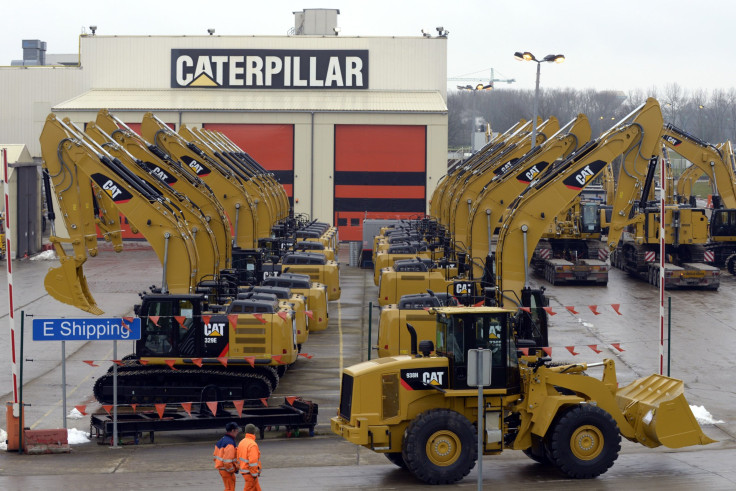Caterpillar (CAT) Slashing Jobs, Closing Plants Across The World As Equipment Demands From Global Mining Industry Drops

Caterpillar Inc. (NYSE:CAT) has laid off about 13,000 employees, roughly 10 percent of its workforce, over the past year and expects to cut several hundred more U.S. jobs as it struggles with plunging heavy-equipment demand from the global mining industry.
It's been a difficult and unpredictable three years for mining companies. They saw a meteoric rise in capital expenditures that spiked in 2011, according to estimates from Factset and William Blair & Co. LLC, but they are now seeing expenditures at their lowest since 2009, with projections that things will get worse leading into 2015.
The result is mining companies slashing such capital expenditures as heavy equipment purchases, which has resulted in Caterpillar having significant overcapacity.
The Peoria, Ill., company’s most recent layoff announcement is that its Pulaski, Va., coal hauler plant will close next year, with the loss of 240 jobs. And a mining equipment plant in Kilgore, Texas, is expected to lay off 100 workers in the coming months.
Among Caterpillar layoffs already completed are the dismissal of 115 workers in South Milwaukee, Wis.; 125 workers at the company's Large Engine Center in Lafayette, Ind.; 800 jobs at a mining equipment plant in Decatur, Ill.; 280 positions from a recycled transmission plant in South Carolina; and 1,400 jobs at an excavator plant in Belgium. Other layoffs have occurred in Beckley, W.Va., Tazewell, Va., and Sudbury, Ontario.
Caterpillar reported third-quarter profits of $946 million, or $1.45 a share, down from $1.7 billion, or $2.54 a share, one year earlier. Overall, that represents a 44 percent decline in profit. Sales to Cat dealers dropped by nearly $1.5 billion, $3.5 billion lower than at the end of 2012.
Adding to the company’s woes, federal investigators are now probing a Cat subsidiary for allegedly throwing parts of its trains into the sea so it could claim damages from rail network owners.
© Copyright IBTimes 2024. All rights reserved.












